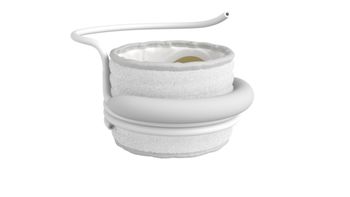
NY doctors scramble to adopt e-prescribing to combat abuse, fraud
Physicians in New York state have put away their pen and paper method of prescribing in exchange for electronic scripts-many just in time to meet the state requirement.
New York-Physicians in New York state have put away their pen and paper method of prescribing in exchange for
The number of New York providers set up for electronic prescribing of controlled substances (EPCS) increased by 28% since March 1, according to Surescripts data reported by Business Wire.
Related:
The shift comes following the Internet System for Tracking Over Prescribing (I-Stop) mandate that aims to tackle prescription abuse and fraud. The law, which took effect on March 27, establishes New York as the first state to require electronic prescribing of all medications, and it slaps prescribers with penalties if they don't comply.
For providers without a waiver for e-prescribing, possible penalties include fines or professional discipline, a New York State Department of Health spokesperson said.
So far, the Department has issued about 4,400 waivers, representing approximately 17,300 prescribers.
Reactions
The law's
In addition to using software that follows the federal requirements - whether a third party audit or DEA certification - EPCS prescribers also have to adhere to an identity proofing process as well as a two-factor authentication. That EPCS software also must be registered with the Bureau of Narcotic Enforcement.
When New York City internist Andrew Lyons, prescribes electronically, he uses an application on his iPhone that generates a code every 30 seconds. Then he enters that security token provided by the phone into the device he’s using to prescribe, such as a computer.
“You have to put in your password for the prescription as well as the number that is currently generated on your electronic token, and if they both match, then the prescription goes through,” Lyons explains. “If they don't, then someone might be trying to prescribe in your system without that proper security clearance.”
Healthcare news:
There were more than 79,000 New York practitioners e-prescribing as of March 31 compared with 52,000 actively e-prescribing as of March 31 last year, according to a spokesperson for the New York State Department of Health,
Drop in narcotic prescriptions
Maldonado said inappropriate narcotic prescriptions due to “doctor shopping” have already decreased by about 90% in New York under the I-Stop mandate, which requires that most prescribers review the Prescription Monitoring Program registry of a patient's prescription history before prescribing a schedule II, III, or IV controlled substance.
“You have a decrease that came about solely by physicians checking the registry and not by e-prescribing,” Maldonado says. “So the question now is, will e-prescribing make any significant dent on the remaining 10%? And many of us are a little bit skeptical on that.”
Modifications
However, some modifications to the new law are being pursued, and some have already taken effect. In a March letter, the state health commissioner
Maldonado explained in the letter that a doctor isn't going to give his or her secret codes to a nurse over the phone, and if he or she sent it to the pharmacy directly, the nursing home wouldn't have a record of it. Other electronic prescription exceptions include those with “long or complicated directions” or those for compound drugs, the letter states.
Additionally, Maldonado said that any time a prescriber faces a power failure and therefore has to write a paper prescription, he or she has to report the incident to the state health department.
“If my computer system goes down, and I have 45 patients in my office that are going to require prescriptions, I have to notify (the?) state on all 45 of those patients,” he said. “That's an incredible burden to put on an office that is dealing with the burden already of, 'why did my computer system go down, how quickly can I get it going?' Now on top of that, I have to notify the state on each and every one of those patients?”
Healthcare update:
In the meantime, the Medical Society of the State of New York, is asking that prescribers instead document the issued paper prescription in the patient's record, according to the group’s letter.
Exemptions
MSSNY is also pursuing legislation to exempt from the requirement prescribers who write 25 or fewer total prescriptions annually. That way, those physicians wouldn't need to apply for waivers every year.
Despite the bumps in the implementation road, e-prescribing has benefits, says Lynbrook gastroenterologist Larry Good, MD, who describes electronic prescribing as the “stepchild” of the electronic health record, but with far fewer flaws.
He says the law will improve accuracy in filling prescriptions because it will eliminate the problem of pharmacists misinterpreting prescribers’ illegible handwriting.
“I really am an advocate for this program,” Good says. “I think it will be successful. I think it will result in better safety for patients and better communications between patients, physicians and pharmacies.”
Newsletter
Stay informed and empowered with Medical Economics enewsletter, delivering expert insights, financial strategies, practice management tips and technology trends — tailored for today’s physicians.








